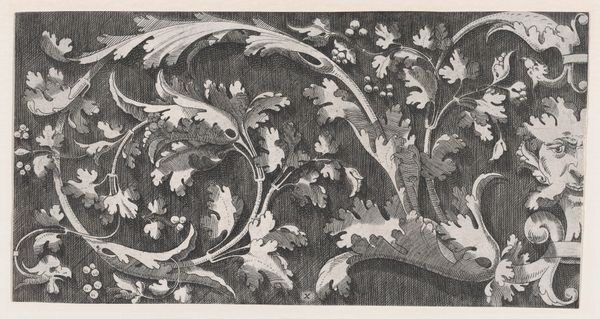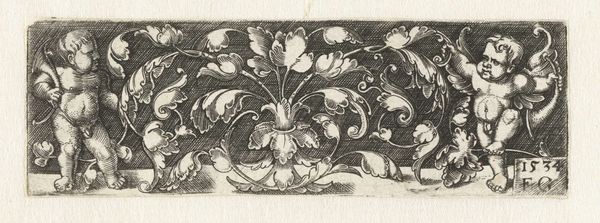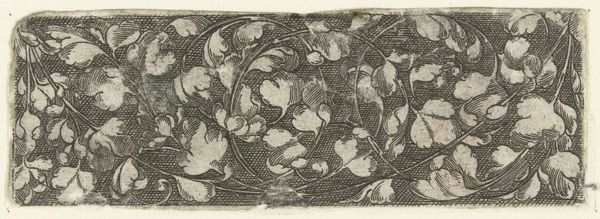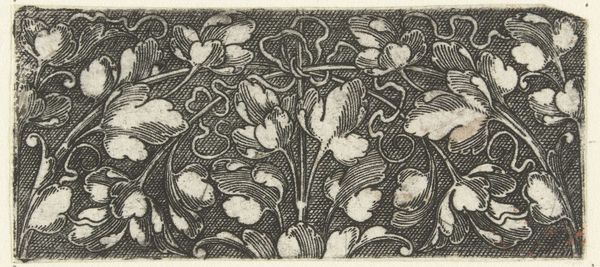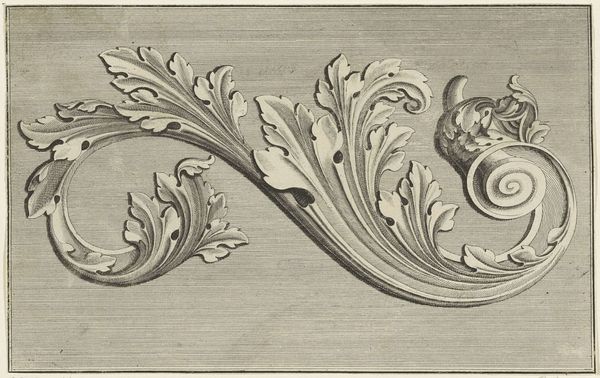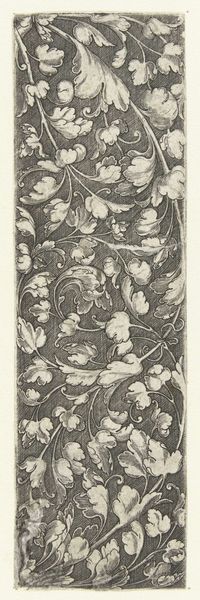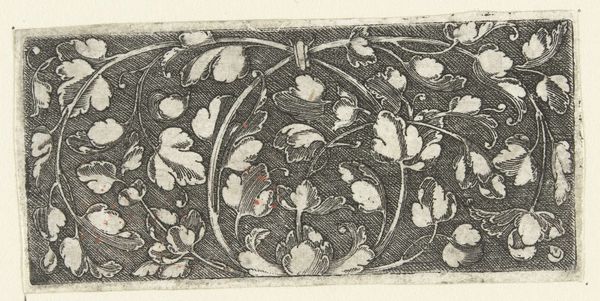
drawing, print, engraving
#
drawing
# print
#
old engraving style
#
form
#
11_renaissance
#
line
#
engraving
Dimensions: height 135 mm, width 266 mm
Copyright: Rijks Museum: Open Domain
Enea Vico created this print of curling foliage somewhere between 1523 and 1567 using etching. It is a design, a pattern, ready to be applied to a surface. Consider Vico's position as an Italian artist during the Renaissance, where the revival of classical forms mingled with a rising interest in the natural world. Ornamentation and design weren't just about decoration, it was about encapsulating the harmony and order believed to govern the universe. Think about the labor required to produce such a design. The knowledge and skill of the craftsman versus the patron who would own the luxury object. And think about those leaves and vines. In what ways might they be a coded language for a system of power? The abundance of the natural world tamed and refined into a symbol of wealth and taste? Perhaps, in this dense and carefully rendered pattern, we find not just beauty, but also a reflection on the complex relationship between nature, culture, and the stratified society that Vico inhabited.
Comments
No comments
Be the first to comment and join the conversation on the ultimate creative platform.

